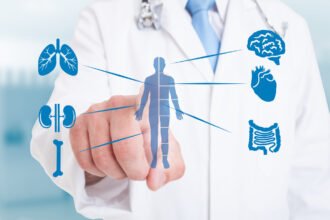Urodynamic testing is a detailed medical procedure aimed at diagnosing urinary tract conditions, such as incontinence and bladder dysfunctions, by assessing the functionality of the bladder and urethra.
This diagnostic approach not only helps to pinpoint the reasons behind urinary symptoms but also guides treatment strategies, ensuring patients receive tailored care. As patients prepare for these tests, they undergo various assessments that, while sometimes uncomfortable, are critical for obtaining accurate insights into their urinary health.
Following the test, the interpretation of results by healthcare professionals allows for the formulation of effective treatment plans.
Dr. Brian Richardson knows that engaging openly with healthcare providers about the outcomes and subsequent steps can significantly enhance patients’ understanding and involvement in managing their health.
Essential Facts About Urodynamic Testing
Urodynamic testing is a specialized procedure used to diagnose urinary tract disorders by evaluating the function of the bladder and urethra. These tests measure various aspects, such as bladder pressure and urine flow, providing critical insights that help healthcare providers understand symptoms like incontinence or frequent urination.
This diagnostic tool is integral in pinpointing issues within the lower urinary tract and facilitating targeted treatment plans.
The standard tests conducted under the umbrella of urodynamic assessments include cystometry, which assesses bladder pressure during filling and emptying, and uroflowmetry, which measures the speed and volume of urine flow. These tests are crucial as they help to reveal the functional status of the bladder and urethra, which are vital for accurate diagnosis and subsequent management.
Understanding the specifics of each test, patients are better equipped to undergo urodynamic testing with realistic expectations about what each assessment entails. This knowledge not only prepares them for the procedure but also aids in comprehending their potential diagnoses, making it a fundamental step in managing and treating urinary tract conditions.
Preparing for and Undergoing Urodynamic Testing
As patients gear up for urodynamic testing, they are often advised to modify their fluid intake. They may be asked to arrive with a full bladder, depending on the specific test being conducted.
Mental and physical preparation can significantly ease the experience, with healthcare providers usually providing detailed instructions prior to the appointment. This preparatory phase is crucial as it ensures that the test results are accurate and reflective of the patient’s normal urinary functions.
During the testing procedure, patients can expect a series of steps that, while perhaps uncomfortable, are typically quick and minimally invasive. The process may involve the insertion of catheters into the bladder and rectum to measure pressures and flows.
Although this might sound daunting, understanding the sequence ahead of time can help reduce anxiety. Each phase of the test is conducted with professional oversight, aiming to ensure patient comfort and accuracy of the data collected.
Analysis and Interpretation of Test Results
Following urodynamic testing, the analysis of results is a detailed process where the data collected are compared against normal ranges to identify any deviations indicating a disorder. The interpretation of these results can reveal various conditions, from overactive bladder to neurogenic bladder, guiding further treatment options. This step is critical as it allows healthcare providers to tailor treatments based on specific functional impairments found during testing.
Healthcare professionals may use these insights to discuss potential treatment paths with patients, making the results a pivotal part of the consultation. The clarity and understanding of the test outcomes are essential for patients to feel informed about their condition and involved in their treatment planning.
Diagnosing Conditions with Urodynamic Testing
Urodynamic tests play a crucial role in diagnosing various urinary tract disorders, including urinary incontinence and bladder dysfunctions. By precisely measuring bladder pressure and urine flow, these tests can help identify the underlying causes of urinary symptoms.
Such diagnoses are instrumental in developing an effective treatment plan, ensuring patients receive the most appropriate therapy for their specific condition.
The benefits of urodynamic testing are manifold, extending beyond simple diagnosis. In cases where symptoms are complex or previous treatments have failed, these tests provide a deeper insight into the mechanics of the bladder and urethra, which can be critical for achieving a successful treatment outcome.
However, it is also essential to acknowledge the potential discomforts associated with the procedure, such as the temporary insertion of catheters during the test.
Post-Test Recommendations and Patient Care
After the completion of urodynamic testing, healthcare providers typically discuss the results with the patient, outlining any abnormalities found and suggesting appropriate treatment options. This discussion might lead to recommendations for lifestyle changes, medications, or even surgical interventions, depending on the severity and type of the diagnosed condition.
Ensuring that patients understand these recommendations is vital for effective management of the condition.
In addition to medical treatments, follow-up care may include behavioral therapies or exercises aimed at strengthening pelvic muscles, which can significantly improve symptoms in many cases. The proactive engagement of patients in their treatment and management plan is crucial for optimal outcomes.
Engaging with Your Healthcare Provider
Patients need to maintain an open dialogue with their healthcare providers about urodynamic testing and its implications. Patients should feel empowered to ask about the significance of their test results and how these influence their treatment options.
Such conversations can clarify any uncertainties and help patients make informed decisions regarding their health.
Questions include inquiries about alternative treatments, what to expect in terms of symptom improvement, and how to manage their condition in the long term. Engaging actively with healthcare providers not only enhances understanding but also contributes to more personalized and effective care.










